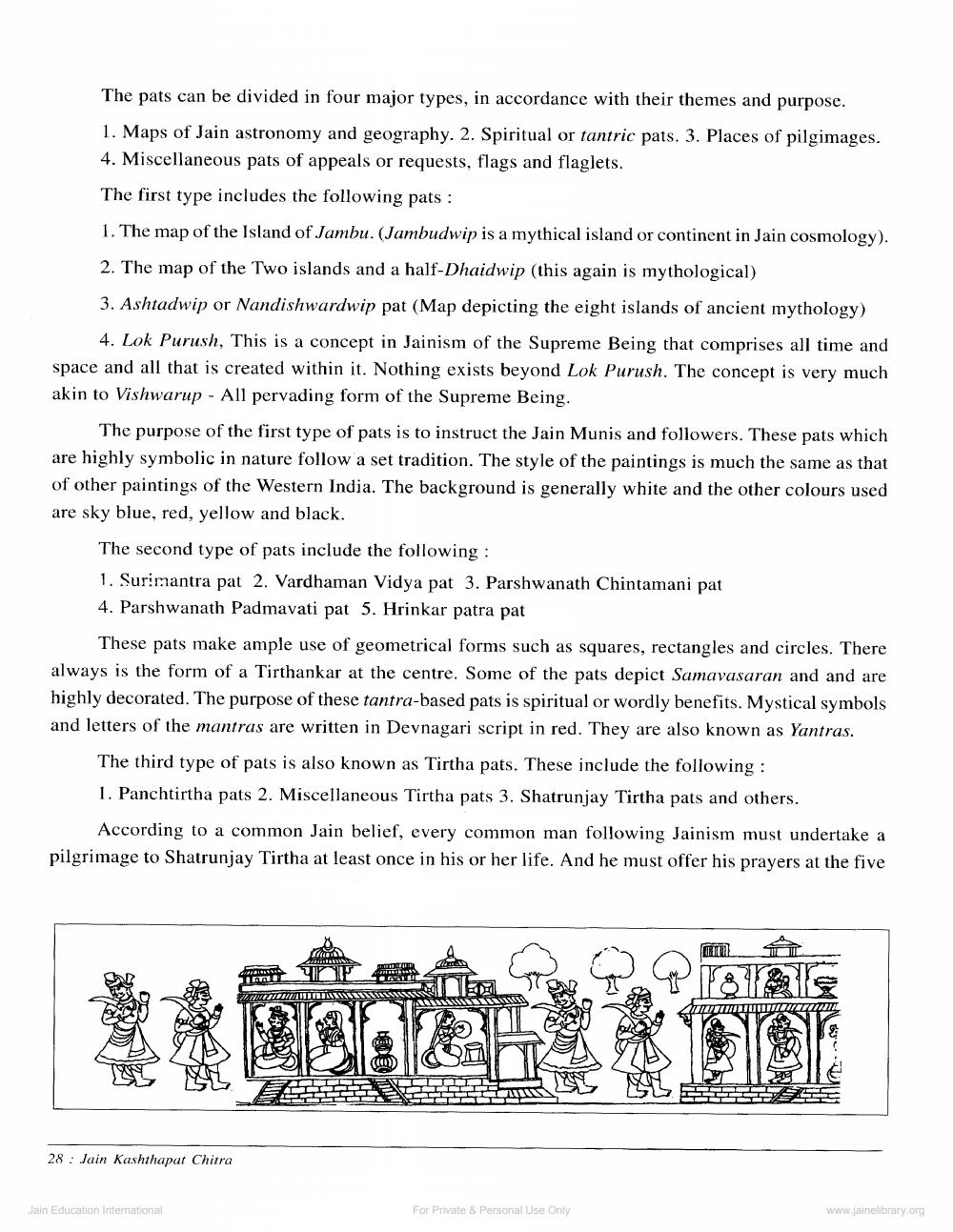________________
The pats can be divided in four major types, in accordance with their themes and purpose. 1. Maps of Jain astronomy and geography. 2. Spiritual or tantric pats. 3. Places of pilgimages. 4. Miscellaneous pats of appeals or requests, flags and flaglets. The first type includes the following pats : 1. The map of the Island of Jambu. (Jambudwip is a mythical island or continent in Jain cosmology). 2. The map of the Two islands and a half-Dhaidwip (this again is mythological) 3. Ashtadwip or Nandishwardwip pat (Map depicting the eight islands of ancient mythology)
4. Lok Purush, This is a concept in Jainism of the Supreme Being that comprises all time and space and all that is created within it. Nothing exists beyond Lok Purush. The concept is very much akin to Vishwarup - All pervading form of the Supreme Being.
The purpose of the first type of pats is to instruct the Jain Munis and followers. These pats which are highly symbolic in nature follow a set tradition. The style of the paintings is much the same as that of other paintings of the Western India. The background is generally white and the other colours used are sky blue, red, yellow and black.
The second type of pats include the following: 1. Surimantra pat 2. Vardhaman Vidya pat 3. Parshwanath Chintamani pat 4. Parshwanath Padmavati pat 5. Hrinkar patra pat
These pats make ample use of geometrical forms such as squares, rectangles and circles. There always is the form of a Tirthankar at the centre. Some of the pats depict Samavasaran and and are highly decorated. The purpose of these tantra-based pats is spiritual or wordly benefits. Mystical symbols and letters of the mantras are written in Devnagari script in red. They are also known as Yantras.
The third type of pats is also known as Tirtha pats. These include the following: 1. Panchtirtha pats 2. Miscellaneous Tirtha pats 3. Shatrunjay Tirtha pats and others.
According to a common Jain belief, every common man following Jainism must undertake a pilgrimage to Shatrunjay Tirtha at least once in his or her life. And he must offer his prayers at the five
LUNETTEN MIT
28 : Jain Kashthapat Chitra
Jain Education International
For Private & Personal Use Only
www.jainelibrary.org




